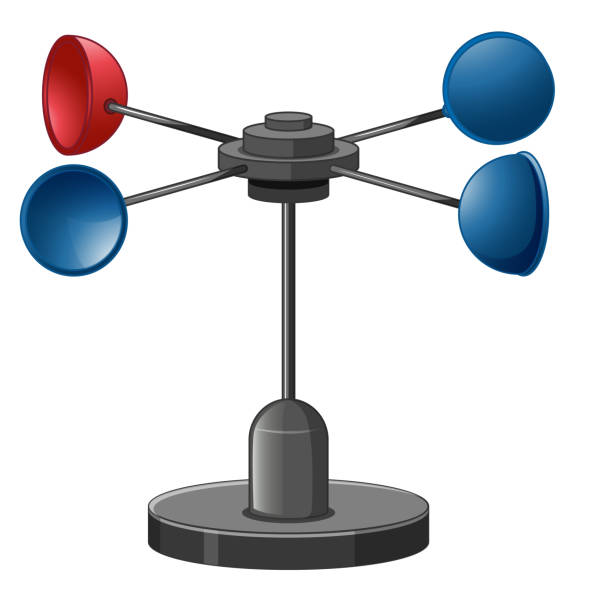All You Need to Understand About Anemometers: Exactly How They Work, Why They Matter, and Where to Utilize Them
Anemometers, however often forgotten in the world of clinical instruments, play a critical function in numerous areas, offering beneficial insights into wind rate and air movement patterns. As we dive right into the ins and outs of anemometer modern technology, we will discover the inner operations of these devices, their value, and the essential considerations when choosing the right anemometer for details applications.

Anemometer Basics
A crucial tool used to determine wind rate and direction, the anemometer plays a critical role in meteorology and different markets. An anemometer usually is composed of three or 4 mugs that revolve in the wind, a vane that points into the wind, and sensing units to track the rotations or movements.
There are numerous kinds of anemometers offered, including mug anemometers, vane anemometers, hot-wire anemometers, and sonic anemometers, each with its special attributes and applications. Cup anemometers are frequently used for fundamental wind speed dimensions, while vane anemometers are favored for directional measurements.
Principles of Anemometer Operation
Building on the fundamental understanding of anemometer essentials, the principles of anemometer operation illuminate the technicians behind wind speed and direction measurements. Anemometers run on the principle of air flow impacting a sensing unit, creating it to rotate. Mug anemometers, for example, have 3 or more cups that capture the wind, creating them to rotate quicker as the wind speed increases. The rotation rate is then exchanged a wind speed dimension. Vane anemometers, on the various other hand, make use of a tail or a probe that aligns itself with the wind instructions, offering a measurement of wind instructions based upon the alignment of the sensing unit. Hot-wire anemometers depend on a heated wire that cools down as wind passes over it, with the price of cooling establishing the wind rate. Ultrasonic anemometers procedure wind rate and direction by analyzing the time it considers ultrasonic signals to take a trip between transducers. Comprehending these principles is essential for reputable and exact wind measurements in numerous applications.
Relevance of Anemometers
The value of anemometers in meteorology and different sectors can not be overemphasized. Anemometers play a vital duty in gauging wind rate and direction, offering essential data for weather forecasting, climate studies, environmental monitoring, and aviation procedures. Meteorologists count on anemometers to gather precise wind data, aiding them understand weather condition patterns, predict storms, and issue prompt cautions to the public. In markets such as building, agriculture, sustainable power, and maritime procedures, anemometers are made use of to enhance processes, ensure security, and enhance efficiency. Wind ranch drivers make use of anemometers to examine wind problems and make the most of electricity production from wind turbines. In the maritime field, anemometers aid ship navigation by giving real-time wind info to captains, aiding them make informed decisions to make sure safe voyages. Overall, anemometers are important tools that contribute dramatically to safety, effectiveness, and educated decision-making in meteorology and a variety of sectors.
Applications Throughout Various Industries
In the eco-friendly energy industry, anemometers play an important function in analyzing wind conditions for wind farm placements, making certain optimal power manufacturing. Industries like building and construction and mining use anemometers to keep track of wind rates, vital for security procedures, specifically when functioning at heights or in open-pit mines where strong winds can position risks. In agriculture, anemometers assist farmers in taking care of plant spraying by offering real-time information on wind speed to stay clear of drift.

Picking the Right Anemometer for Your Needs
Picking the ideal anemometer customized to your details needs is necessary for getting accurate wind rate and direction measurements. When picking an anemometer, consider factors such as the desired application, navigate to this site called for dimension range, environmental conditions, and preferred functions. For general objectives, a mug anemometer appropriates for determining wind speed, while a vane anemometer offers wind direction data. Hot-wire anemometers are ideal for low airspeed measurements, and ultrasonic anemometers offer high accuracy and toughness.

Verdict
In verdict, anemometers play a critical duty in determining wind speed and instructions across different sectors. It is important to consider the importance of anemometers in order to make educated choices when selecting the most appropriate tool for gauging wind conditions.
There are numerous types of anemometers offered, consisting of mug anemometers, vane anemometers, hot-wire anemometers, and sonic anemometers, each with its special features and applications. Cup anemometers are generally utilized for basic wind speed measurements, while vane anemometers are liked for directional dimensions. Hot-wire anemometers are appropriate for reduced airspeeds, and sonic anemometers are excellent for my company high-precision measurements in research and commercial settings.Building on the foundational understanding of anemometer fundamentals, the principles of anemometer operation illuminate the mechanics behind wind rate and direction measurements. For general objectives, a cup anemometer is appropriate for measuring wind rate, while a Visit Website vane anemometer gives wind instructions data.